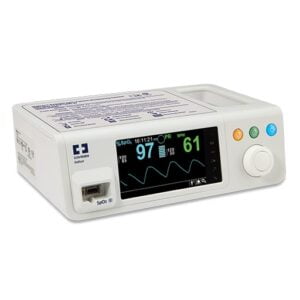Understanding SUDEP: Interventions and Technologies to Reduce Risks


A child being cared for during an epileptic seizure by a qualified special needs carer
Sudden Unexpected Death in Epilepsy (SUDEP) is a devastating event that claims the lives of individuals with epilepsy unexpectedly. It is a silent threat, and its exact causes are not fully understood. However, awareness, proactive interventions, and emerging technologies offer hope in reducing the risk of SUDEP. This blog delves into what SUDEP is, the potential interventions to mitigate its risks, and the innovative technologies that are making strides in epilepsy care.
What is SUDEP?
SUDEP occurs when an otherwise healthy individual with epilepsy dies suddenly and unexpectedly, and no other cause of death is found. It typically happens during or after a seizure, often during sleep. The exact mechanisms behind SUDEP are still under investigation, but potential factors include:
- Cardiac arrhythmias: Abnormal heart rhythms can be triggered by seizures.
- Respiratory dysfunction: Seizures may lead to breathing difficulties or cessation.
- Brainstem dysfunction: The brainstem controls vital functions like breathing and heart rate, which may be disrupted during a seizure.
Understanding these factors is crucial for developing strategies to prevent SUDEP.
Risk Factors
Several risk factors have been identified for SUDEP, including:
- Frequency of generalized tonic-clonic seizures: Individuals with frequent, uncontrolled seizures are at higher risk.
- Seizures during sleep: Nocturnal seizures increase the risk of SUDEP.
- Lack of medication adherence: Irregular intake of anti-epileptic drugs (AEDs) can lead to poorly controlled seizures.
- Young age and early onset of epilepsy: Younger individuals and those with an early onset of epilepsy may have a higher risk.
Interventions to Reduce SUDEP Risk
- Seizure Control:
- Medication Adherence: Ensuring consistent use of prescribed AEDs is crucial. Regular follow-ups with healthcare providers help adjust dosages and manage side effects.
- Surgical Interventions: For some individuals with drug-resistant epilepsy, surgical options like resective surgery or vagus nerve stimulation (VNS) can significantly reduce seizure frequency.
- Ketogenic Diet: This high-fat, low-carbohydrate diet has shown efficacy in reducing seizures in some individuals.
- Lifestyle Modifications:
- Adequate Sleep: Ensuring sufficient and regular sleep helps reduce seizure triggers.
- Stress Management: Stress can exacerbate seizures, so practices like mindfulness, yoga, and therapy can be beneficial.
- Avoiding Triggers: Identifying and avoiding individual seizure triggers, such as flashing lights or certain foods, is essential.
- Regular Monitoring:
- Frequent Check-Ups: Regular consultations with neurologists and other healthcare providers help in monitoring epilepsy and making necessary adjustments to treatment plans.
Technologies to Reduce SUDEP Risk
- Seizure Detection Devices:
- Wearable Monitors: Devices like smartwatches can detect seizures through movement and physiological changes, alerting caregivers or emergency services. Examples include the Nighwatch Epilpesy Monitor
- Bed Sensors: These devices detect seizure-related movements and other changes, such as breathing patterns during sleep. Examples include the SAMi camera
- Smart Home Technologies:
- Smart Speakers and Assistants: Devices like Amazon Echo and Google Home can be integrated with seizure detection systems to provide alerts and summon help.
- Automated Lighting: Smart lighting systems can be programmed to turn on during a seizure, reducing the risk of injury during nighttime seizures.
- Advanced Medical Devices:
- Responsive Neurostimulation (RNS): The RNS System monitors brain activity and delivers electrical stimulation to prevent seizures.
- Closed-Loop Systems: These systems detect seizures and automatically administer interventions, such as electrical stimulation or medication.
SUDEP remains a significant concern for individuals with epilepsy and their families. While the exact mechanisms behind SUDEP are still being studied, a combination of proactive interventions and emerging technologies offers hope in reducing its risks. Ensuring medication adherence, making lifestyle modifications, and leveraging advanced seizure detection devices are all crucial steps in safeguarding those with epilepsy. As research continues and technology advances, the goal of preventing SUDEP and improving the quality of life for individuals with epilepsy becomes increasingly attainable. By staying informed and proactive, we can make strides towards a future where SUDEP is no longer a silent threat.
SleepSure Epilepsy Pillow
The most “Breathable” Epilepsy Pillow available
The SleepSure pillow is designed to prioritize safety by utilizing highly breathable, hypoallergenic materials. SleepSure has also implemented rigorous testing and quality control measures to ensure compliance with safety standards and is now the only anti-suffocation pillow registered with the TGA as a class one medical device, providing peace of mind to users and their families.
Nellcor Oxiband Foam Sensor Wraps Replacements – Adult / Infant (pack of 100)
Nellcor Velcro Wrap for attachment of Adult Reusable Sensor OXI-P/I and D-YS.
Suitable for Adults (Over 40kg – Finger) and Infants (under 3kg – Toe)
Nellcor Oxiband Foam Sensor Wraps Replacement – Peadiatric (pack of 100)
Nellcor Velcro Wrap for attachment of Adult Reusable Sensor OXI-P/I and D-YS.
Suitable for Pediatric patients (Between 3kg – 40 kg)
Nellcor Oxiband Velcro Sensor Wraps Replacement – One Size (pack of 12)
Nellcor Velcro Wrap for attachment of Adult Reusable Sensor OXI-P/I and D-YS.
Suitable for all patients
Medtronic Nellcor PULSE OXIMETER WITH 1 REUSABLE SENSOR PM100N
The Nellcor™ bedside SpO2 patient monitoring system, PM100N, provides at-a-glance access to real-time patient respiratory status information including continuous SpO2 and pulse rate monitoring and trending data.
Nellcor Oxiband Reusable Oxygen Sensor – Adult / Neonatal
OxiMax Oxiband Sensor is a reusable sensor to determine oxygen saturation and pulse rate.
Nellcor Oxiband Adhesive Sensor Wraps Replacement – Peadiatric (pack of 100)
Nellcor Adhesive Wrap for attachment of Adult Reusable Sensor OXI-P/I and D-YS.
Suitable for Pediatric patients (Between 3kg – 40 kg)
Nellcor ADH Oxiband Adhesive Sensor Wraps Replacement – Adult / Infant (pack of 100)
Nellcor Adhesive Wrap is for the attachment of Adult Reusable Sensor OXI-A/N and D-YS.
Suitable for Adults (Over 40kg – Finger) and Infants (under 3kg – Toe)
Nightwatch Replacement Armband (Per Metre)
Replacement armband for Nightwatch seizure monitor, sold by the metre. Nightwatch seizure monitor not included.









